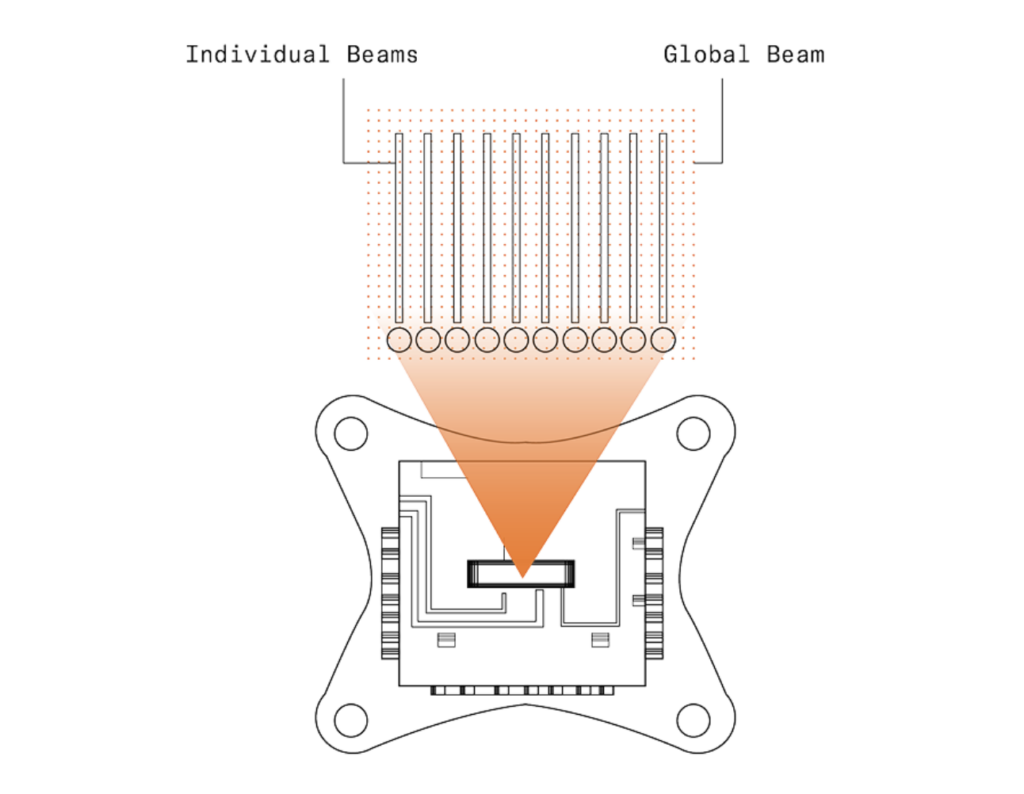Insider Brief
- A new study found that slime molds cannot simulate quantum entanglement or act as biological memristors, contradicting earlier claims of quantum-like behavior.
- Experiments showed that slime molds behave as simple resistor-capacitor systems rather than devices with memory-dependent resistance needed for quantum circuit simulation.
- While unsuitable for quantum modeling, the organisms may still serve as bioelectronic components in low-frequency analog circuits such as filters or phase-shift networks.
- Image: Not a quantum computer. (Photo by adege on Pixabay)
For all those hoping for a slime mold quantum computer, a new study has found that slime molds, often hailed as nature’s problem-solvers, cannot mimic quantum behavior or simulate quantum entanglement. The work also casts doubt on earlier claims that the living organisms might act like biological components of quantum circuits.
Researchers from Biofaction KG, the Karlsruhe Institute of Technology, and the University of Plymouth reported in Frontiers in Soft Matter that their experiments showed no evidence of memristive behavior, which is the property needed for a material to “remember” electrical states and emulate quantum logic. Instead, the slime molds behaved like ordinary resistor-capacitor systems, suggesting they store charge rather than switch between resistance states as a memristor does.
The team set out to examine a provocative question at the intersection of biology and quantum computing: could living organisms serve as analog models for quantum systems? Previous papers had proposed that slime molds (Physarum polycephalum), single-celled organisms known for navigating mazes and forming efficient networks, sometimes act as memristors — electronic components whose resistance changes depending on past current flow.

Memristors are a fourth class of circuit element alongside resistors, capacitors and inductors. They can theoretically replace some quantum hardware functions because they maintain a form of “memory” about electrical input, allowing them to emulate quantum gates such as the Hadamard and CNOT that produce entanglement. If slime molds could act as memristors, it would hint at a living system capable of simulating quantum phenomena without relying on quantum mechanics itself.
But the study’s findings, however, contradicted that idea. When researchers applied oscillating voltages to slime mold samples and measured the resulting current, they saw smooth, oval-shaped current–voltage curves typical of classical circuits. A true memristor would produce a “pinched hysteresis loop,” a figure-eight pattern showing memory-dependent resistance.
The researchers write: “Simulating quantum entanglement with an ideal memristor model has been demonstrated in the literature. In this work we intended to carry out this simulation using simulated memristor models, real physical/electric (Knowm Inc. memristor) and slime molds (Physarum polycephalum). Our experiments demonstrate that the biological component, Physarum polycephalum which has been described in the literature to exhibit memristive behavior turned out not to show any (significant) memristive characteristics due to its inherent capacitance.”

Experiment in the Petri Dish
The team conducted more than 290 electrical tests on 38 separate slime mold cultures grown in plastic centrifuge tubes between January and April 2024. Each setup included conductive rings attached to electrodes, allowing the scientists to pass small alternating voltages through the organism and record the resulting currents.
To verify results, they compared three systems: simulated memristors modeled in software, physical memristors and the living slime molds. The simulated memristors displayed the expected pinched loops. The manufactured devices came close but were disrupted by small unwanted capacitances. The biological samples, however, showed none of the distinctive features.
The researchers also varied voltage strength and frequency to test whether memristive behavior might emerge under different conditions. Even at extremely low frequencies — where biological reactions might play a stronger role — the results stayed elliptical. Old, inactive slime molds measured over a year after cultivation produced nearly identical responses, confirming that the curves reflected passive electrical properties, not biological activity.
Why Biology Falls Short
The study concluded that the slime mold’s internal structure acts like a capacitor. Its cytoplasm, a gel containing ions and water, can store and release charge between pulses of current, leading to phase shifts and electrical smoothing rather than the dynamic resistance changes characteristic of memristors.
The researchers noted that previous reports of memristive behavior likely stemmed from measurement artifacts or specific conditions not reproducible in larger datasets. While a few earlier studies claimed to observe quantum-like hysteresis, most failed to replicate those results consistently. The new study, one of the most comprehensive to date, reported that none of its 89 carefully analyzed datasets produced clear memristor signatures.
Despite the negative result, the researchers emphasized that the outcome refines understanding of how living matter conducts electricity. Instead of serving as analogs for quantum systems, slime molds may be better viewed as bio-capacitive materials that could serve in hybrid analog circuits.
New Uses for Living Circuits
After determining that slime molds are not memristors, the team designed a replacement model composed entirely of resistors and capacitors. The resulting circuit closely matched the electrical behavior of the organism. In theory, such a configuration could function in simple analog filters or phase-shifting networks, suggesting a niche role for “living electronics” in low-frequency signal processing.
“In principle, the slime mold could also be used in several other circuits, such as RC Integrator Circuit, a RC Differentiator Circuit, a RC Time Constant, or a Snubber Circuit,” the researchers write. “Previous work has also shown that slime molds can improve microbial fuel cells when applied to the cathode side. This and other potential bioelectric applications seem interesting for future bioelectric deployment of the slime mold, despite it not showing memristive behavior.”
These biological RC networks could, for instance, help develop sensors that respond to environmental conditions or organic computing platforms operating at very low energy levels. The study also pointed out that similar effects occur in plants, whose internal fluids and cell membranes naturally form capacitor-like structures.
The researchers said that while their findings rule out slime molds as a means of simulating quantum entanglement, the experiments contribute valuable data to the broader effort to integrate biological and electronic systems. The work also provides a framework for distinguishing genuine memristive behavior from capacitance-driven effects, an important step for unconventional computing research.
Future Work Ahead
Future studies may explore whether other organisms or modified biological structures can mimic memory-dependent electrical behavior more effectively. The authors suggested that removing or reducing internal capacitance — a property rooted in the organism’s watery cellular composition — would be necessary before any living system could act as a functional memristor.
“Thus, according to our results, any electric circuit requiring a memristive behavior cannot be designed with slime molds alone,” the team writes. “The inherent capacitance of the slime mold defies the claim that slime molds are (bio-)memristors. It remains to be seen if future experiments will identify a methodology to grow slime molds without a capacitance.”
The paper concludes that, at least under normal conditions, slime molds cannot serve as quantum simulators. Yet they remain promising subjects for studying how life processes interact with electricity. The findings point to a boundary between classical and quantum realms, showing that even in an age of hybrid computing, nature’s own circuits still operate by the familiar rules of physics.
The study was conducted by Markus Schmidt, Günter Seyfried, and Uliana Reutina of Biofaction KG in Vienna, Austria; Zeki Seskir of the Karlsruhe Institute of Technology in Germany; and Eduardo R. Miranda of the University of Plymouth in the United Kingdom.
About The Quantum Insider
The Quantum Insider is recognized as the world’s leading source for timely quantum computing news, industry insights, and market intelligence. Our editorial team delivers trusted analysis to researchers, investors, and industry leaders.


















